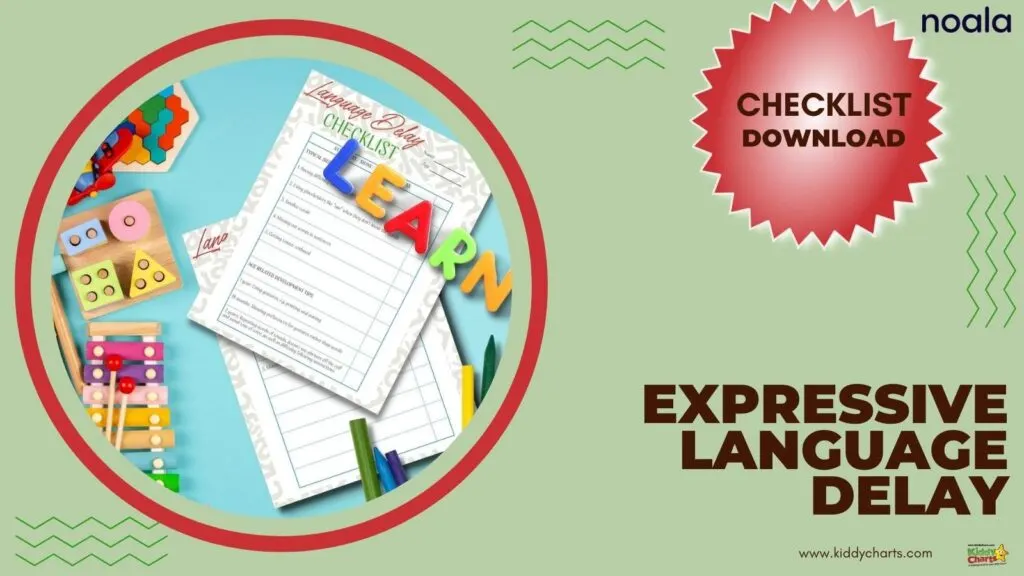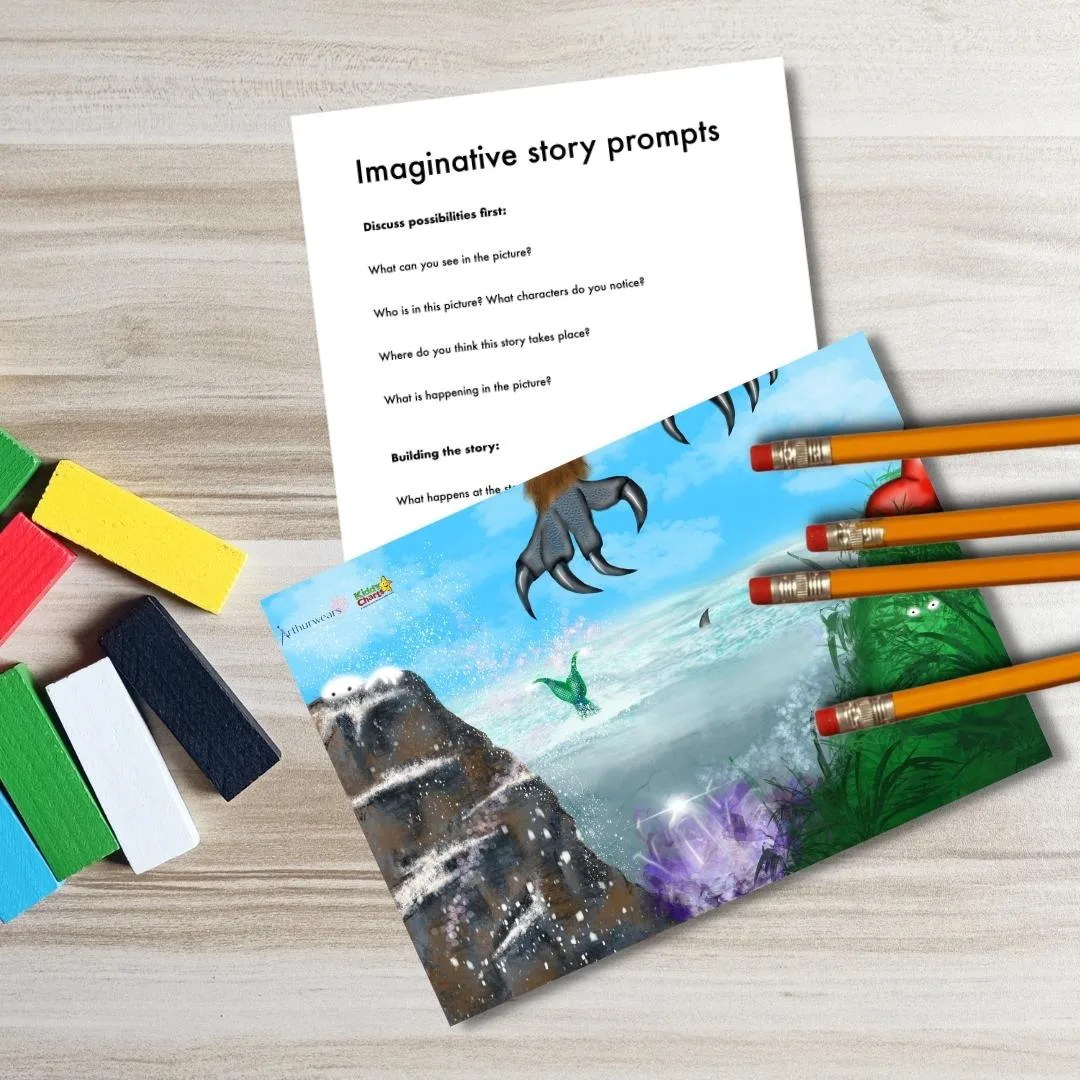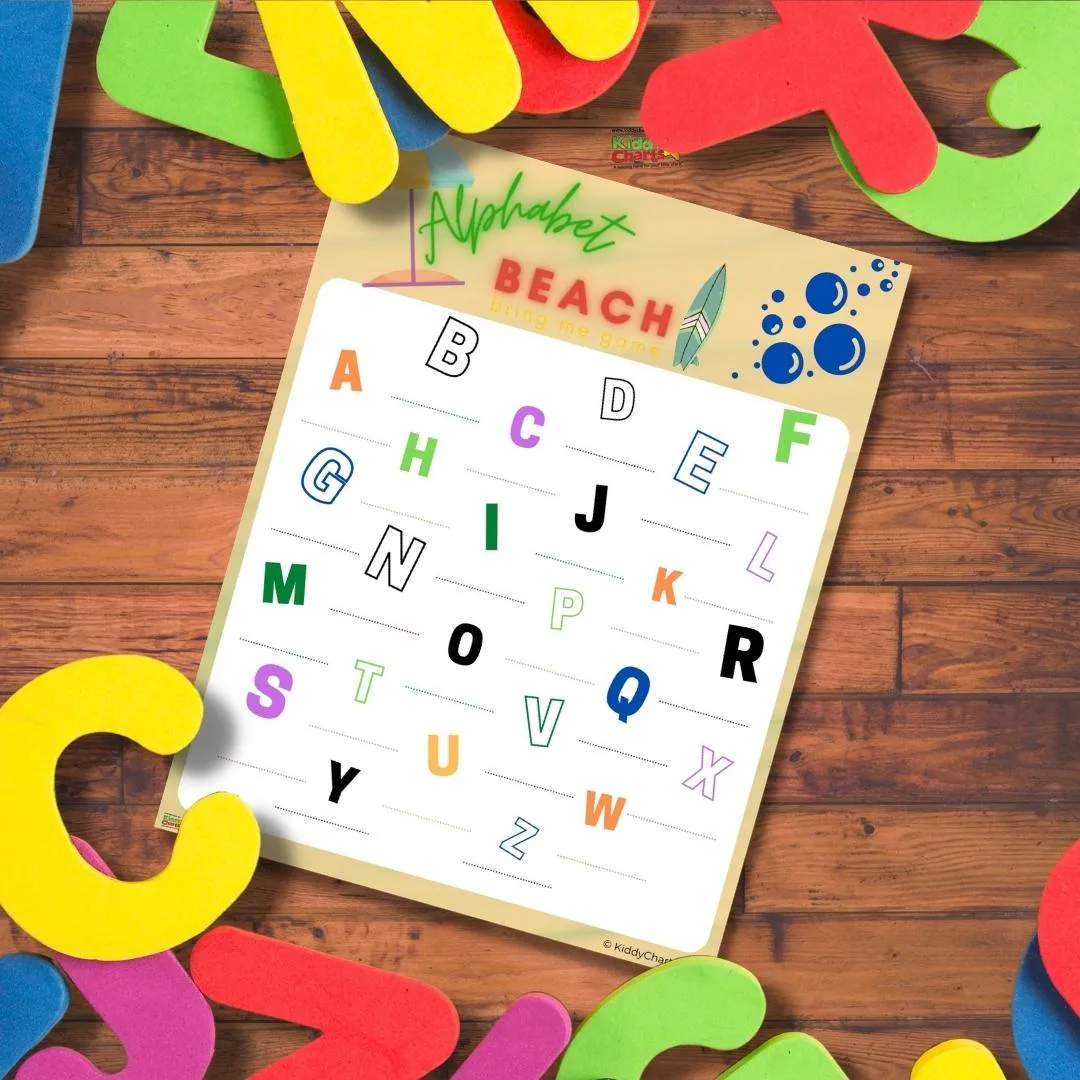We have something a little special for you today; firstly an Expressive Language Delay checklist that we have created with a Noala speech therapist, and then a free consultation with Noala if you have any concerns about your child’s development. Noala have created an app to help with speech and language development in children. The app is suitable both for speech therapists and parents to give them support in their child’s communication journey.
In order to claim the 10-minute free consultation; just book with Noala through Calendly now. Noala’s clinical team will be in contact with you. If you aren’t sure about your child’s speech development, we can help with that too.
<< Use KIDDYCHARTS20 promo code when buying the app to get 20% off it.
Get 50% off the online consultation after that initial 10-minute chat if you mention you have been referred by KiddyCharts! >>
This is a sponsored post.

Check out the checklist we have with this article, and you can see whether it is worth chatting to someone, or even helping to foster your child’s development with Noala.
This is a collaborative post.
What is expressive language delay

it is important to spot language delay as soon as we can, as children that experience speech or language delay can struggle at school and socially. Communication is such a key part of our development. Any delay could potentially have a negative effect on our children.
Children with expressive language delay may present some of the following signs:
- Have difficult putting their words together in sentences, and they may not be able to put words together in the right order correctly when they do use sentences,
- Tend to use placeholder words in sentences as they don’t have the capacity to find the right word. Placeholders are words like “um”,
- Simply use less words than other children: so a smaller vocab,
- Miss out words completely in their sentences, and finally
- Get their tenses confused when they are talking.
Is there an age difference in language development?
There is a difference, of course, in development in languages by age. So expressive language delay needs to be set in context of the age of the child. For example:
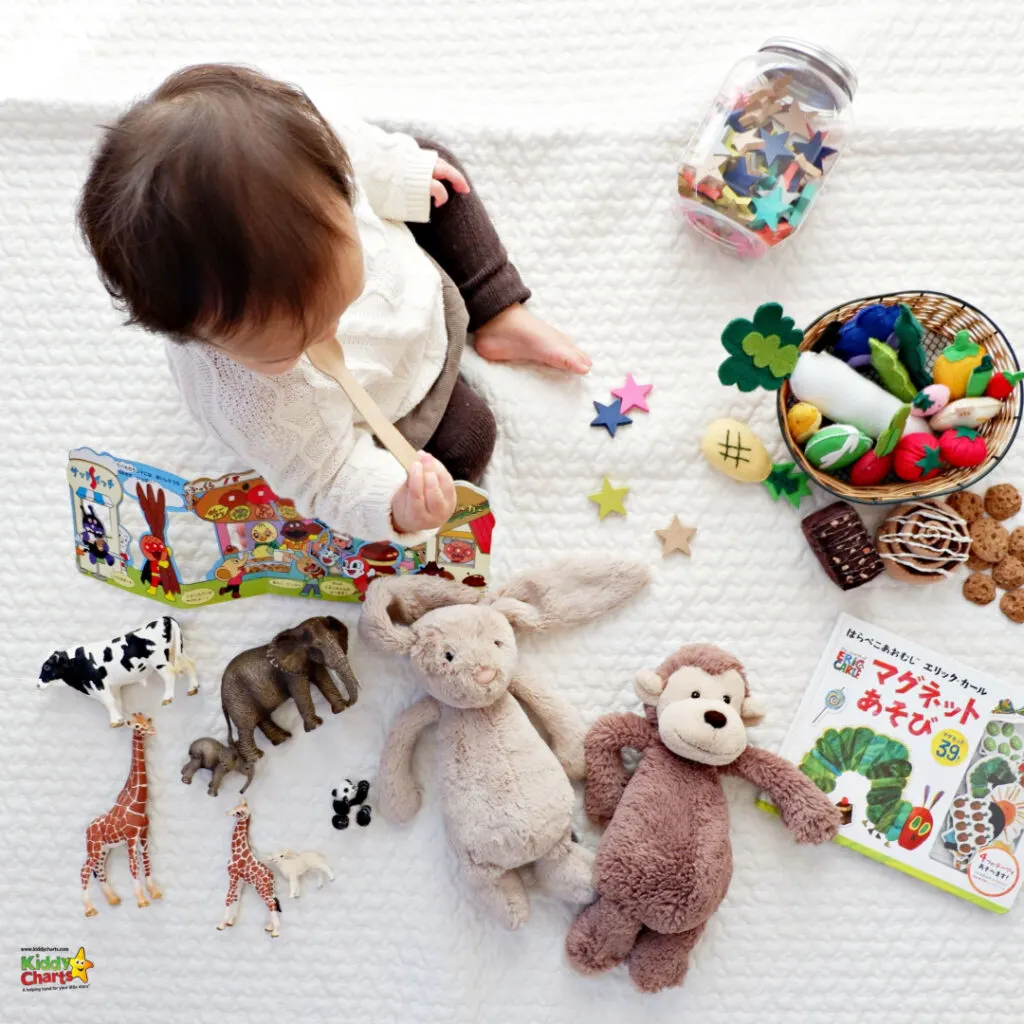
- 1 year (12 months): Would be expected to be using gestures, including pointing and waving goodbye at this age,
- 1.5 years (18 months): Might show a preference for using gestures rather than words to communicate, and also has trouble imitating sounds, such as animal noises. Likely to also have difficulty in understanding easy / basic requests to them, and
- 2 years (24 months): Is able to imitate speech / actions, but doesn’t use words or phrases off the cuff. Has a tendency to repeat words or sounds. In addition, children with a delay can only use language for basic and immediate requirements, are unable to follow instructions. They are likely to also have a strange tone of voice as well, e.g. raspy or nasal.
5 subtle signs and symptoms of expressive language delay
We know it can be difficult sometimes to look out for these things, so let’s take a look at some of the more subtle signs and symptoms of expressive language delay as well.

- Appropriate language use around adjectives, words with many meaning, and language used figuratively: Kids that have expressive language delay might find it challenging to use adjectives. In addition, they could struggle with language such as adverbs, metaphors, similes and idioms. If it isn’t literal, it would be challenging for them to wrap their head around. Children with a communication delay could potentially not use these words, or repeatedly, incorrectly place them in sentences.
- Struggling socially: If your child has language delay, then it is likely that they might struggle in their social world too. So much of our language to each other is conveyed through speech that if we cannot use language as expected, social situations can become frustrating. This can lead to anxiety and depression as children just don’t know how to manage socially,
- Sequencing Kids are likely to struggle with story-telling, or following instructions. This can lead to tantrums and anger because children really want to express themselves, but simply don’t have the tools,
- Differences in how they talk: When we chat, we do so naturally with different tones, pitches, speed, etc. Those kids with expressive language delay have a much more monotone voice, so can sound rather awkward and flat-voiced, and finally
- Missing anything that is “between the lines”: When we talk, there is often the sense of reading between the lines about what we are talking about. We make inferences from our speech, and act accordingly. If there is language delay, children would struggle with this and can only see the literal and more obvious. They simple don’t get reading between the lines.
We have put together a clinically reviewed checklist for these signs and symptoms – both the obvious, and the less so. Why don’t you take a look at it?
Checklist for expressive language delay
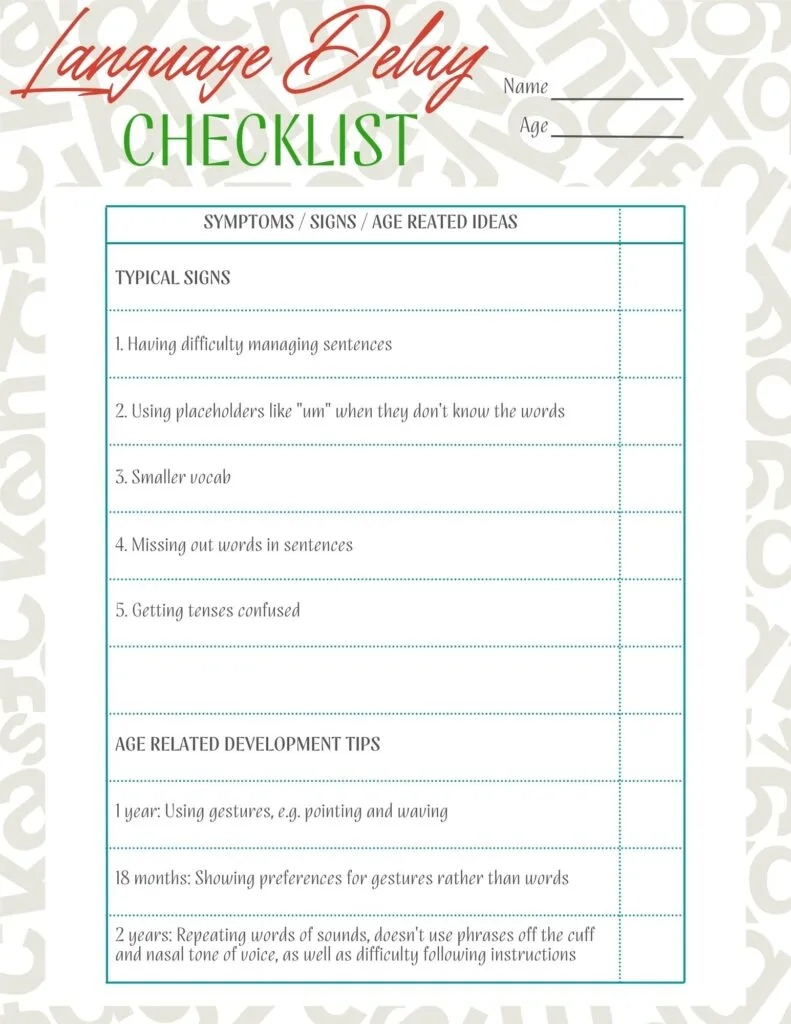
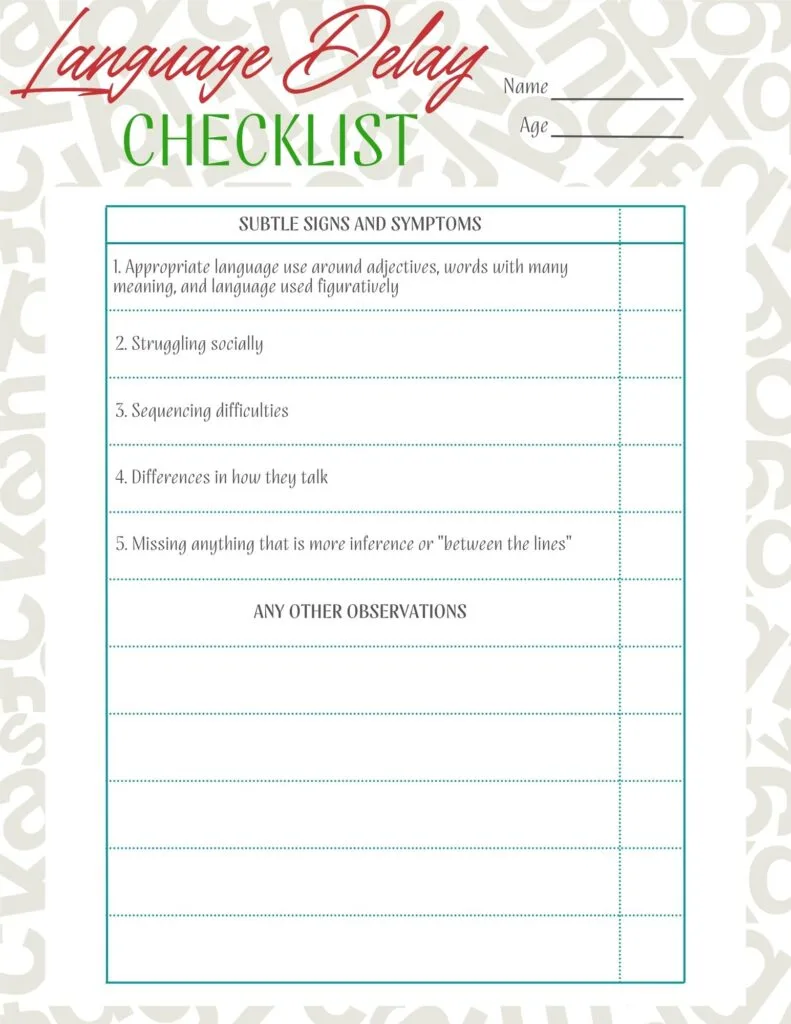
We have split this checklist into two sheets. The first sheet has the overall symptoms, and the developmental age information. The second one includes the more subtle symptoms for you to take a look at.
Any concerns with regards to your children, why not book a free 10 minutes expert chat with a Noala speech and language therapist? The details were provided earlier within the article, but you can book with Calendly too, with an additional code for 20% discount from the app using KIDDYCHARTS20.
If after this 10-minute consultation, you would like a full online assessment, you can get 50% off this by mentioning you have been referred by KiddyCharts too.
We hope that this is a useful article and checklist for you. Drop us a line if there is anything else that you need as well.
To download the checklist – just click on the button below:
Why not sign up for our daily / as it happens newsletter while you are here?
If you would like other speech resources from the site – why not take a look at these?
Speech and language resources on KiddyCharts
We love to give you free ideas and activities, so why not check out some of the other ones we have on the site around speech and language.
Tips to encourage your toddler's speech development
A great article with some simple ideas to help your toddler with their speech development.
Verbal Apraxia: An introduction to our diagnosis
A very personal story from one of our readers about their Aphraxia diagnosis with their son.
Verbal Apraxia: After Early Intervention
A continuation of our Apraxia case study with a reader talking about how early intervention supported their son.
Creative and imaginative story prompts for kids #31daysofactivities
This is a lovely little activity that helps with imagination, creativity, language and reading comprehension - so loads in there in one hit!
Alphabet games: Bring me game for kids
This is a really simple game for sight recognition of letters, and is loads of fun. Download it today.
We really hope you come back to the site again soon.
Take care,
Helen
